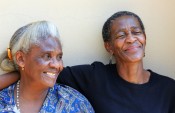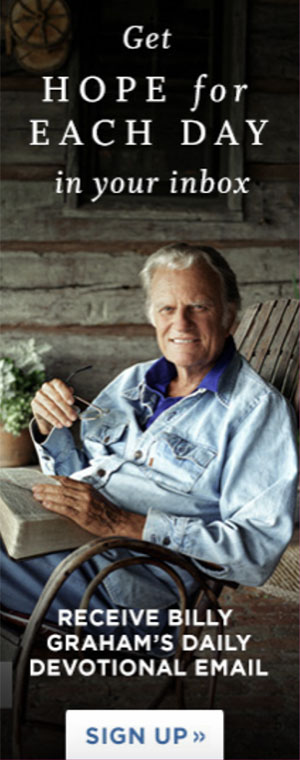What does it take to ship 93 tons of disaster relief supplies from Charlotte, N.C. to Sendai, Japan?
During normal times, it would take quite an organized effort. But these aren’t normal times. Far from it.
“I don’t often get teary-eyed,” said Ivan Giesbrecht, Information Officer for the Samaritan’s Purse team in Japan. “This was an incredible humbling experience.”
But before realizing the effort, organization, cooperation and complexity of this relief effort, Kenny Isaacs, Vice President of Programs for Samaritan’s Purse, knows none of this would have been possible had it not been for God’s perfectly-orchestrated plan.
“More important than anything, it’s the strong and excellent reputation that the Billy Graham Evangelistic Association has in Japan,” Isaacs said. “And the relationships and the trust and respect that they have with the Christian leaders … that’s what’s opened the doors for Samaritan’s Purse to come in Japan and gain the favor that we have with the officials and move forward to help people.”
Specifically, it’s the people serving on the Japan Mission Center – the executive committee that made last October’s Festival a reality – that has helped Christians earn that respect. The herculean effort centered around those relationships.
“We couldn’t be doing what we’re doing in Japan if it hadn’t been for the work the Billy Graham Organization did in laying the structure for the Franklin Graham Festival in Osaka,” said Isaacs, who has been working closely with Chad Hammond, BGEA Associate Director of Asian Affairs. “It’s those relationships with the Christian leaders.”
93 TONS: THE JOURNEY
From Charlotte Douglas International Airport to Sendai, Japan is almost 10,000 miles, but the journey of the 93 tons of disaster relief supplies took at least that many prayers.
From 1 p.m. Friday, the 747 took off in Charlotte, carrying supplies ranging from plastic sheeting for shelters to water filtration systems to blankets to hygiene kits.
Landing at Yokoto Air Force Base, west of Tokyo, at 5:30 p.m., the U.S. military unloaded the plane in less than an hour, storing the supplies overnight at a warehouse on base.
Now, the tricky part.
The roads leading from Yokoto to Sendai are closed because of the radiation spilling out of the nearby Fukushima nuclear plant eclipses the interstate.
With trucking not an option, Samaritan’s Purse needed the help of the U.S. military working in concert with hundreds of Japanese volunteers.
Service personnel from the U.S. Marines, Air Force, Army and Navy airlifted the emergency supplies in two Air Force C17 transport jets, aircraft that had never landed at Sendai Airport. The items were loaded on trucks and transported to a warehouse in Sendai.
From there, more than 300 Japanese volunteers – including school children, mothers, businessmen and even the elderly – waiting several hours in the freezing cold, eagerly and cheerfully helped with unloading.
The culmination of these supplies reaching their destination and God’s provision working through the human spirit created a scene that choked up Giesbrech.
“Seeing these wonderful Japanese people rushing around to help us unload our trucks was very emotional for me,” he said. “It was a very special moment for me to see the people of this country so enthusiastically help both Samaritan’s Purse and their own community.”
DEVASTATION LIKE HURRICANE KATRINA
Assessing the damage and need is never an easy thing in natural disasters. Isaacs has been doing this for nearly 25 years and just when he thought he had seen it all …
“The thing has shaken the Japanese people in a tremendous way,” he said.
The Japan crisis, on the heels of last year’s Haiti earthquake, has resonated to Isaacs to always prepare for anything. And everything.
“You know after Bosnia, I thought I’d never see anything like that again,” Isaacs said. “Then Rwanda, wow, I’ll never see anything like that again. Then Hurricane Mitch in Honduras and all the death and destruction and I thought that would be the biggest thing I would ever be involved in, in my life.
“Then there was the war in Kosovo. Then the floods in Mozambique. Then there was the (Indonesia) tsunami and then Hurricane Katrina. Then there was Haiti. And I thought Haiti would be the biggest thing. It’s certainly not Haiti, but in some ways actually the damage is much more than Haiti.”
And that response is changing almost daily. The latest reports from Japanese officials are that more than 15,000 people may have died in Miyagi Prefecture. The official death toll is now over 8,200 with approximately 12,300 reported missing.
“People’s first response after the earthquake was sort of shock, but by Monday or Tuesday it was painfully obvious that the level of devastation is like Hurricane Katrina in the United States.
“But it may be on a much larger scale in proportion of what the nation can do. So if you compare it to Katrina, here we are five or six years out and some of that damage hasn’t even repaired. Japan is looking at that same set of circumstances.”
The Samaritan’s Purse team of 14 people in Sendai is estimating it will take at least a month for the Japanese government to “get back on top of the situation.”
“The team feels like it will be four-to-six weeks before people are not hungry and thirsty and cold,” Isaacs said. “But I’m trusting in the Lord. I don’t feel we’re here without a plan from God.”
A FIVE-HOUR WAIT FOR A BANANA?
The scarcity of food in the Sendai region is still phenomenal. The shelters have rationed supplies to one cup of rice a day.
Want anything else? Be prepared to wait.
“The team reported people are waiting five hours to get a single banana,” Isaacs said. “They described the lines as having hundreds of people in them and they’re waiting very patiently and quietly. Nobody’s grumbling and that’s what they get, one banana.”
The critical issue of trying to contain the Fukushima nuclear plant has swallowed most of the local government resources.
“The nuclear element is very complicating,” Isaacs said. “It’s very difficult to work in Japan. It’s a structured society. It’s not a country that has relief agencies coming into it. But what we are doing is very much seen as being brought to Japan as an extension of the Christian church here.”
Isaacs is asking for continued prayer for discernment in all the rescue efforts and for the troubled people of Japan, that the hope of Jesus would resonate through the Japanese believers.
“There’s fear in people’s hearts here,” he said. “A lot of people are leaving Tokyo. They’re afraid of the radiation. They’ve lost confidence. But I’m trusting in the Lord. I don’t feel we’re here without a plan from God.”
Visit our prayer page or follow the BGEA Prayer Team on Twitter to support prayer efforts.

